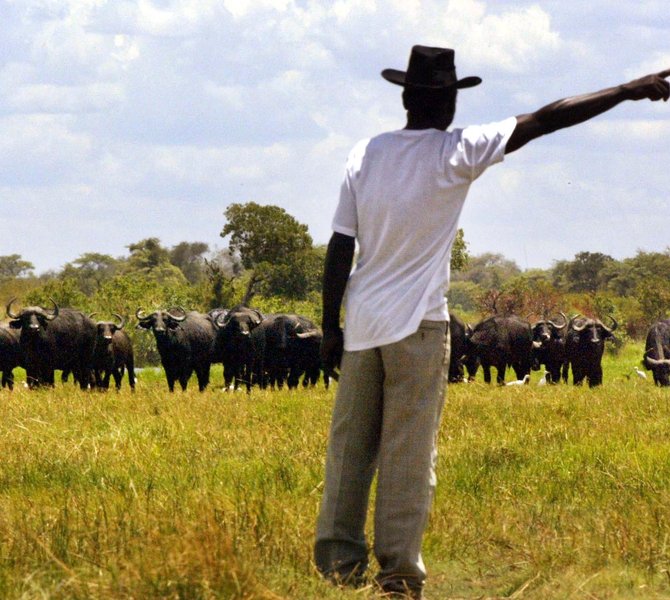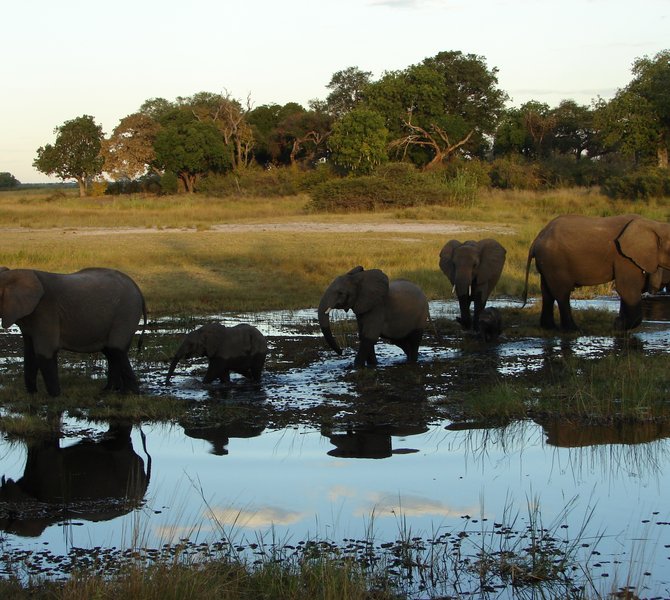Cases
Community-Based Resource Management in Namibia (WWF)
Summary
Community-based natural resource management is a people-centered concept promoting the integration of conservation of natural resources and development of rural communities. One important aspect of the concept is taking into consideration various stakeholder groups as fruitful collaboration between local communities, government bodies and NGOs have to be ensured.
Situation
Project Background
The conservancy approach evolved out of the post-apartheid situation in Namibia. For a long time white farmers had the solely rights to commercial farm land. The black population usually had no chance of owning land titles or wildlife. As a result there was no incentive for them to care for the land they lived on – as a consequence over the years wildlife and natural resources soon decreased. After Namibia became independent in 1990 the new government was intent on redressing the imbalances of the past. In 1996 the conservancy policy was established. The conservancy idea is based on the principle, that rights have to be tied to responsibilities. Under the policy communities can register for the land they live on to be declared a conservancy – once the conservancy status is granted by the Ministry of Environment and Tourism, they in return have to look after the wildlife and are entitled to benefit from the consumptive and non-consumptive utilization of wildlife. The conservancy concept was a great success in Namibia as it managed to diversify the livelihoods of rural populations. Over the years the conservancy status was expanded to the right over tourism and with the further enabling community forestry legislation, rural communities can also harvest medicinal plants commercially, which is an important source of revenue today.
Stakeholders
Two organizations that played a major role in this process in Namibia are the Integrated Rural Development and Nature Conservation (IRDNC) who helped to initiate the process and keep very close ties to the local communities and the World Wide Fund For Nature (WWF) as a provider of technical and specialized consultancy and training services. Both of these organizations are members of a broader umbrella body, NACSO (Namibian Association of Community-Based Natural Resource Management Support Organizations) that coordinates strategic support for the national conservancy program.
Approach
Phase 1: Exploring & Engaging
Community-based natural resource management is a people-centered concept promoting the integration of conservation of natural resources and development of rural communities. One important aspect of the concept is taking into consideration various stakeholder groups as fruitful collaboration between local communities, government bodies and NGOs have to be ensured. The Dialogic Change Model describes the approach of Stakeholder Dialogues. After the conservancy policy was introduced in 1996 the information about this new opportunity was spread among the local communities by NGOs like the IRDNC. To process the distributed information and to discuss pros and cons village meetings were held. It was made sure that every member of the community involved understood the implications of applying as conservancy. Only then did a community decide for or against an application. Once the decision was made each village elected a representative core-group, including traditional leaders who discussed the details of the conservancy set-up and oversaw the boundary negotiations with communities inside and adjoining the proposed conservancy to identify exact boundaries. This process takes a lot of time – there are even some communities that started negotiating the boundaries in the 90's and keep on doing so until today. The fact that the exact set-up of the conservancy including its boundaries is not predefined by government officials has proven a valuable instrument to engage the villagers and to ensure their ownership in designing their very own conservancy. Also the IRDNC’s community facilitation experience ensured that a wide range of local stakeholders were involved in the process, not just the leadership – women, different age groups, workers and the unemployed were all included. Being listened to by government staff was a unique experience for most, and the open, non-prescriptive process contributed to the remarkable degree of popular support that continues to drive the national program.
Phase 2: Building and Formalizing
Once a community has finalized this process the next step is to formulate the conservancy’s constitution. This is also done in a highly integrative manner. The core group decides jointly on a constitution draft including for example rules on how the conservancy committee is going to be elected or what the exact purpose of the conservancy is going to be. This first draft will then travel from village to village, with all members being able to give their input before it is consolidated in the core group. As a last step before approval by the Ministry of Environment and Tourism the traditional leaders and the governor of the region will have to give their approval of the constitution.
Phase 3: Implementing and Evaluation
After the conservancy is approved there will be several monitoring systems set into place. Once a year, each conservancy has to hold a general meeting with its members with the purpose to report back to members on expenditure and progress, and to jointly plan the budget for the next year. In addition there is an annual audit of the natural resources and enterprises in the conservancy which assesses the data gathered through a local monitoring system, promoting adaptive management. The network between the different conservancies is very closely knit. Peer-learning is encouraged, for example in a chairperson’s forum that deals with issues that cross conservation boundaries. Another learning mechanism that was introduced is a mentoring program and cluster trainings. An important success factor is the support of NGOs like the IRDNC and the WWF. They use their complementary expertise to mediate between the local authorities and the government representatives or provide special technical training opportunities like wildlife support and joint-venture know how to establish conservancy lodges together with private investors.
Phase 4: Developing further, replicating or institutionalizing
n/a
Transformation
Change initiative
The conservancy concept builds on the symbiosis of stakeholders with, as it seemed contradictory interests. The Ministry of Environment and Tourism wants to preserve the natural resources of the country. For the local communities the extraction of the latter was long seen as the last resort to survive. By applying the stakeholder dialogue approach the conservancy concept could be implemented in a more collaborative and dialogic manner – and thus a more sustainable process could be ensured. In Namibia until today more than 79 communities have joined forces under the conservancy policy to be able to use their lands resources sustainably – leading to 21% of the countries land being cultivated that way (as of May 2013). One in five rural Namibians today lives in a conservancy. New business opportunities have evolved for the communities and at the same time the wildlife has recovered. The elephant population for example increased from 15,000 in 1995 to over 20,000 today. There are 34 lodges and over 30 camp sites that have a working agreement with a conservancy, providing around 700 full time and at least 1,600 part time jobs that help to support families in rural areas. In addition the conservancies today provide a stable infrastructure for many NGOs, government bodies and development organizations that are seeking to introduce different topics, such as health related issues, for example.
Results
The focus on relationship building and the increased level of control and ownership over natural resources that is now in the hands of local communities that applied for the conservancy status have led to a high level of trust and ownership. The jointly agreed goals are continuously revised and like that respected by the larger community. The communities were being left to figure out what they wanted themselves, but supported with technical assistance and know-how when asked for. The peer-learning mechanism between the different conservancies ensures a sustainable and self-reliant existence of the concept.










0 Comments